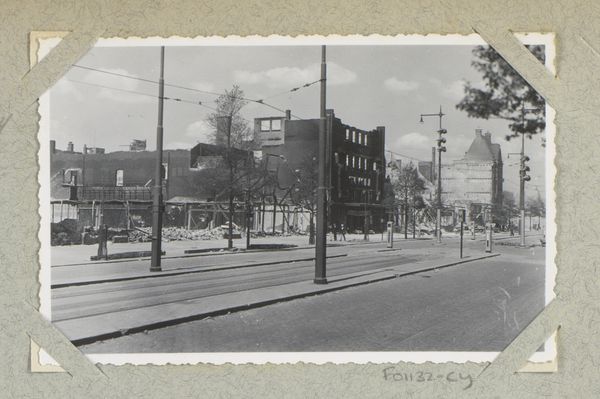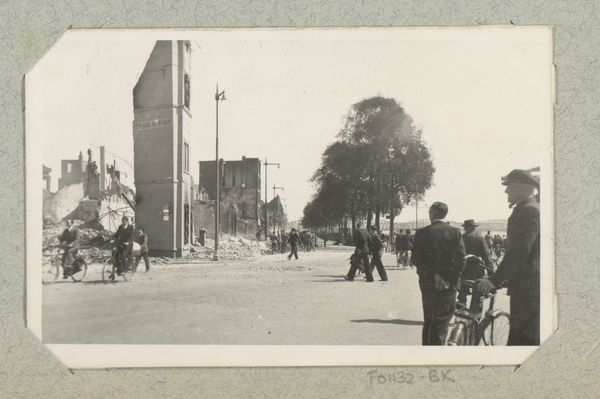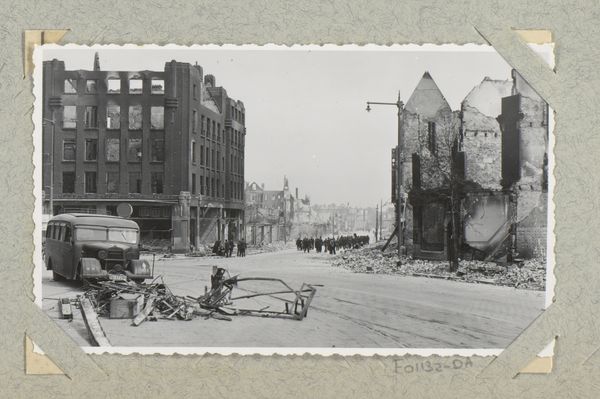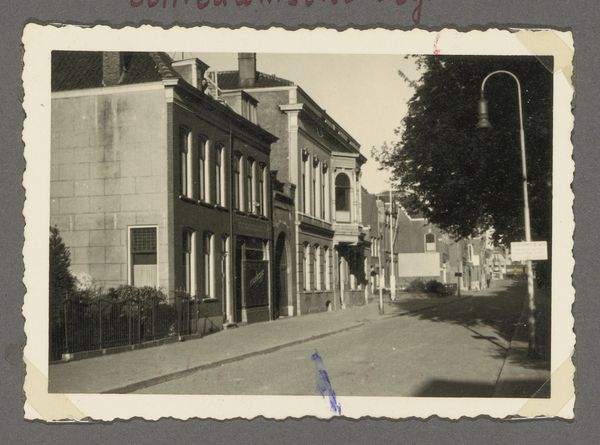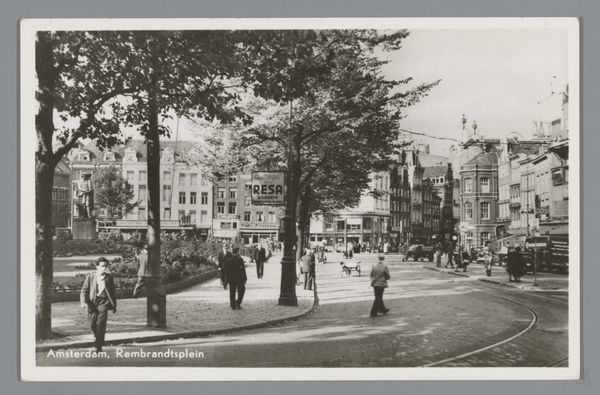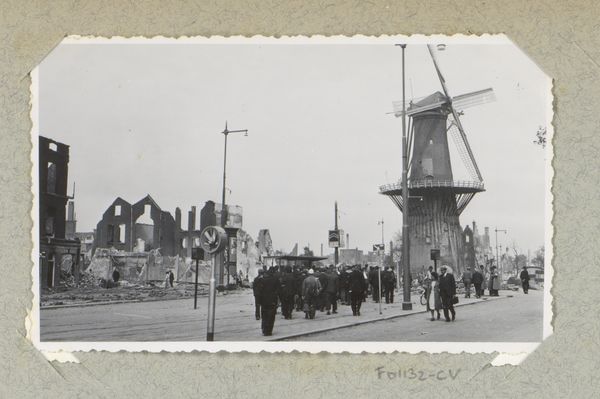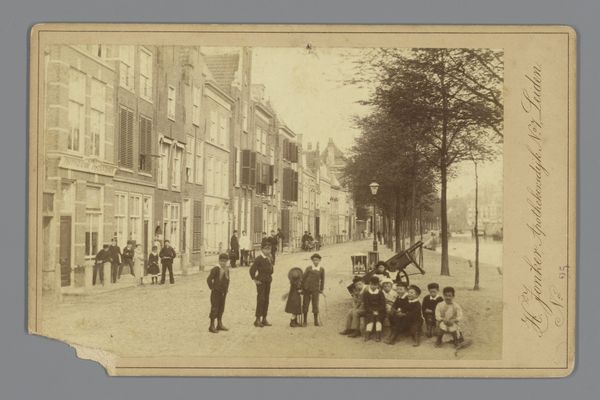
Dimensions: height 88 mm, width 136 mm
Copyright: Rijks Museum: Open Domain
Curator: This gelatin-silver print, entitled "Voetgangers voor de ruïnes van de Marinierskazerne te Rotterdam," or "Pedestrians Before the Ruins of the Marine Barracks in Rotterdam," was taken by J. Nolte sometime between 1940 and 1945. Editor: My first impression is one of haunting resilience. The stark contrast of light and shadow emphasizes the ruined buildings, yet the presence of pedestrians creates a sense of life persisting amid devastation. Curator: The composition directs our gaze vertically. The photograph's meticulous tonal range, particularly within the grayscale, allows us to contemplate the material consequences of conflict as brick and mortar are reduced to spectral absences. Editor: Yes, but what is the photographer trying to say about power and resistance by including these pedestrians? They look rather ordinary, caught between maintaining decorum and having to navigate such devastation as they just walk through a city. It reads almost like an act of defiance, reclaiming space that has been attacked. Curator: I disagree. By focusing on the visual form, Nolte eschews specific political readings, revealing the universal structures that define how any photographic image transmits visual information, no matter how complicated the setting is. Editor: But consider what that evasion of political commentary performs. It can read to some as indifference. The work thus becomes enmeshed in larger questions around historical responsibility. Whose stories do we preserve, and what frameworks do we use? Curator: Nonetheless, such arguments might take us away from appreciating the pure technical brilliance with which Nolte constructs an intriguing study of visual form using a historical subject. It offers an outstanding representation of balance between spatial abstraction and structural clarity. Editor: I appreciate your precision with form, while I still believe that acknowledging its function within the politics of memory is vital. This photograph is, if anything, a testimony of people persisting. Curator: That's a useful point with which to conclude.
Comments
No comments
Be the first to comment and join the conversation on the ultimate creative platform.



